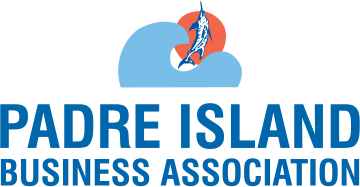Small business owners understand better than anyone the impact that COVID-19 has had on the daily workplace. In an instant, millions of jobs went remote in 2020, and remote working continued to be the norm in 2021. When offices and businesses began to reopen, the Great Resignation of 2021 occurred. Many employees chose to remain at home or move to new cities, leaving business owners to fill in the gaps as best as possible.
So, what will 2022 bring to the workplace? Here are some of the trends that are expected to define the daily workplace in the coming year and beyond.
Hybrid or remote work
Even though many Americans have been vaccinated against COVID-19, many businesses continue with a remote or hybrid approach to work whenever possible. According to WeWork, approximately four out of five C-suite executives approve of employees splitting time between the office and remote work, and for a good reason. Location-agnostic work has allowed employees greater freedom and control when balancing multiple responsibilities. Remote work means saving money on overhead costs for business owners, from office space to coffee supplies.
With the stress of the pandemic and a high rate of burnout wearing on the workforce, some companies may let their employees continue to log in from home in 2022. Others may experiment with a hybrid framework that brings workers into the office a couple of days a week.
Focus on centralized communication
Work teams are now distributed across different time zones and continents, making centralized communication essential. With instant messaging, email and other forms of communication popping up all day, some workers may be experiencing communication overload. Focusing on centralized communication can cut through the noise and increase productivity.
A survey by ReportLinker shows that workers feel pressured to respond to instant messaging, which disrupts their workflow. When instant messaging became the primary way to communicate at work, this pressure became even more apparent. Centralized communication through email or more sophisticated software and video tools can resolve this conflict.
According to a recent McKinsey report, connected employees experience a 20-25% increase in productivity, which is done through the implementation of social tools that enhance communication and collaboration.
Prioritizing workplace wellbeing
It’s hard to define workplace wellbeing when many employees work remotely. Now, the kitchen table often doubles as an office place. Sitting in uncomfortable furniture, extending work hours and removing the boundary between work and home can place undue stress on workers’ personal and professional lives.
Addressing workplace wellness in your small business includes keeping workers comfortable and productive while working remotely. It also involves enforcing the importance of work-life balance.
A 2021 Wellable Employee Wellness Industry Trends Report reveals that 88% of employers invest more in mental health initiatives. The survey also enumerates other ways companies are investing in workplace wellness, whether that workplace is a home, an office or a retail store:
- Telemedicine – 87% of employers
- Stress management/resilience – 81% of employers
- Meditation and mindfulness – 69% of employers
These results indicate that employers have recognized the need to support employees in traditional workplaces and their homes. Workplace wellness will remain critical in 2022, and watch for more programs geared towards wellness and how it relates to recruitment and retention to emerge in the coming years.
Hyperfocus on employee retention
As a business owner, you are likely wondering if the Great Resignation will continue in 2022. To keep their employees on board, many companies are focusing more on retention efforts. These efforts are essential, as 73% of surveyed workers were considering quitting their jobs, according to Joblist, underlining the importance of understanding what motivates workers and how to keep them satisfied to avoid losing them to the competition.
Some ways companies can revitalize their retention strategies include:
- Implement or continue using performance reviews to give and solicit feedback
- Implement career development strategies, including succession plans for employees looking to grow in their current role
- Encourage employees to take time off to recharge
Human resources personnel and small business owners can also directly ask employees what would make their work or workplace more inviting.
Diversity, Equity and Inclusion
Diversity, Equity and Inclusion (DEI) initiatives are more critical than ever, with approximately 79% of companies planning to increase their DEI budgets in 2022, per a Traliant report. Companies that emphasize inclusivity and innovation make every employee feel respected and valued. According to a recent Glassdoor survey, 76% of job searchers want diversity in the workplace.
Inclusivity efforts may require you to honestly assess where your organization currently stands. Then, you can create a diverse, equitable and inclusive workplace that your current and future workers will value.
Keep up with current trends with help from BBB
Keeping workers productive and healthy in the office, warehouse, or at home is just one of the ways small businesses can keep up with the latest trends in 2022. Furthermore, businesses can prevent communication overload by centralizing communication, and they can improve employee retention by providing clear career development paths. Following these trends can improve morale and help small businesses recruit new team members in the coming year.
In addition to following these workplace trends in 2022, it’s also helpful to understand the trends that will drive small business growth in the coming year and beyond.
For more business tips to make the most out of 2022, visit BBB.org/SmallBusiness.
